
NASA has announced a new round of opportunities for CubeSat developers to build spacecraft for upcoming launches through the agency’s CubeSat Launch Initiative (CSLI). CubeSats are a type of small spacecraft known as nanosatellites.
This initiative provides access to space for U.S. educational institutions, certain non-profit organizations, and informal educational entities such as museums and science centers. It also includes NASA centers focused on workforce development, including the Jet Propulsion Laboratory in Southern California, and encourages participation from minority-serving institutions.
“Working with CubeSats is a way to get students interested in launching a career in the space industry,” said Jeanie Hall, CSLI program executive at NASA Headquarters in Washington. “NASA reviews applications for CubeSat missions every year and selects projects with an educational component that can also benefit the agency in better understanding education, science, exploration, and technology.”
Applicants must submit proposals by 5 p.m. EST on November 15. NASA plans to make selections by March 14, 2025, for flight opportunities between 2026 and 2029, though selection does not guarantee a launch opportunity. Applicants are responsible for funding the development of their small satellites.
Selected CubeSats are assigned a launch and deployment either directly from a rocket or to low Earth orbit from the International Space Station. Once accepted, NASA mission managers serve as advisors to the CubeSat teams, ensuring that technical, safety, and regulatory requirements are met before launch. Those selected will enhance their skills in hardware design and development and gain knowledge in operating CubeSats.
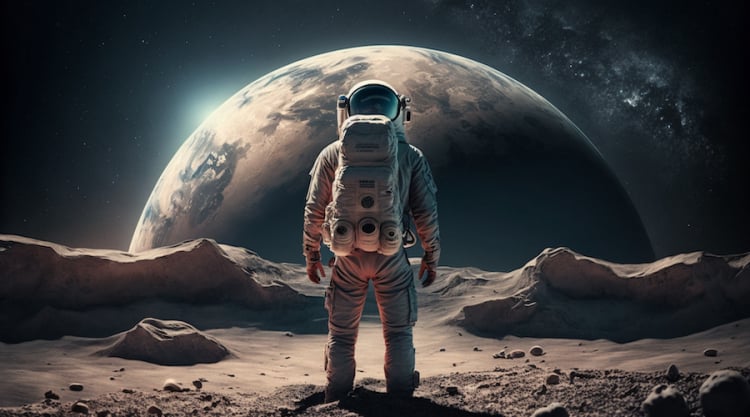
Recently, eight CubeSat missions were launched into space aboard Firefly Aerospace’s Alpha rocket on July 3 from Vandenberg Space Force Base in California. Among these was CatSat, built by students at the University of Arizona, which is testing a deployable antenna attached to a Mylar balloon. Another mission, KUbeSat-1, developed by the University of Kansas, is testing a new method for measuring cosmic rays hitting the Earth. This launch was notable for achieving two firsts for CSLI: KUbeSat-1 and another mission, MESAT-1, were the first CSLI missions from the states of Kansas and Maine, respectively.
Additionally, four CubeSats were sent to the International Space Station as cargo in a SpaceX Dragon capsule on March 21 aboard a Falcon 9 rocket from Space Launch Complex 40 at Cape Canaveral Space Force Station in Florida, as part of NASA’s SpaceX 30th commercial resupply mission. Once aboard the space station, astronauts deployed these small missions into various orbits to test and advance technologies aimed at improving solar power generation, detecting gamma-ray bursts, determining crop water usage, and measuring root-zone soil and snowpack moisture levels.
CubeSats are spacecraft sized in multiples of a standardized unit called a “U.” A 1-Unit (1U) CubeSat measures about 10 x 10 x 11 cm (3.9 x 3.9 x 4.5 inches). They are small enough to fit in the palm of your hand and can be stacked to create slightly larger, more capable spacecraft. A 3U CubeSat is three times the size of a 1U, and a 6U is six times the size.
Since the program's inception, NASA has selected CubeSat missions from 45 states, Washington D.C., and Puerto Rico, launching approximately 160 CubeSats.
NASA's Jet Propulsion Laboratory has proposed creating the first lunar railway system designed to provide reliable, autonomous, and efficient transport of payloads across the Moon's surface. The agency plans to develop FLOAT, which stands for Flexible Levitation on a Track, a system using magnetic robots that levitate above the track.
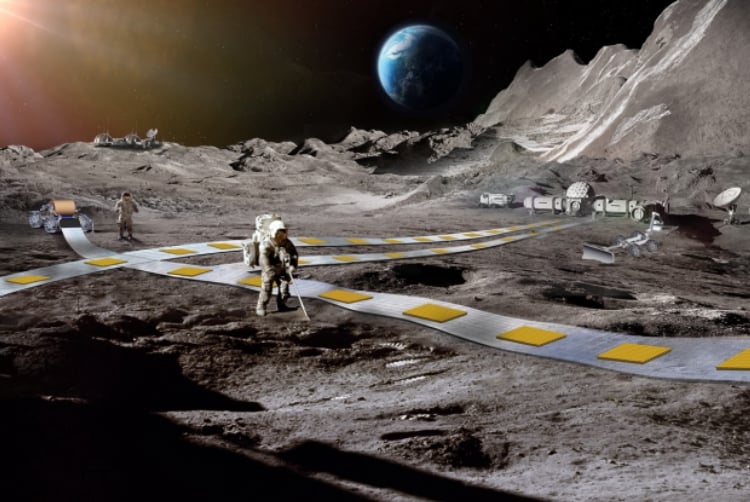
How does it work?
NASA explains that the track will consist of three layers: a graphene layer enabling robots to float above it through diamagnetic levitation, a flex-circuit layer generating electromagnetic thrust to move the robots along the track, and an optional, but preferable, solar panel layer to harness sunlight. An additional benefit of FLOAT is that the robots won't touch the track, minimizing wear and tear.
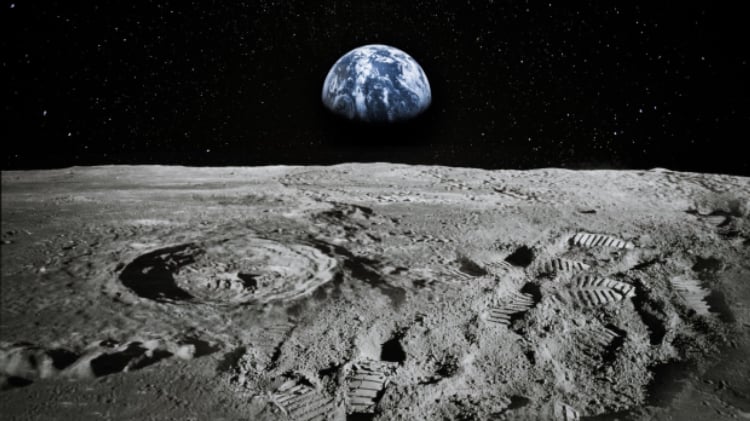
The space agency also highlighted that the proposed track design can be directly deployed onto the Moon's surface without requiring extensive construction. Regarding capacity, NASA envisions that FLOAT robots will be able to carry payloads of various sizes. The agency anticipates that the FLOAT system will be capable of transporting over 100,000 kilograms (220,462 lbs) of regolith or payloads multiple kilometers per day from various locations across the lunar surface.
The Hubble Space Telescope has captured an extraordinary image known as the "piercing eyes" of space, showcasing the merger of two galaxies called Arp-Madore 2026-424.The image strikingly resembles the face of an ethereal entity, with the most distinct elements being the cosmic eyes. Each "eye" represents the luminous core of a galaxy, surrounded by a "face" outlined by a ring of young, blue stars.This galaxy system, Arp-Madore 2026-424, originated from a dramatic frontal collision between two galaxies and will maintain this form for approximately 100 million years.
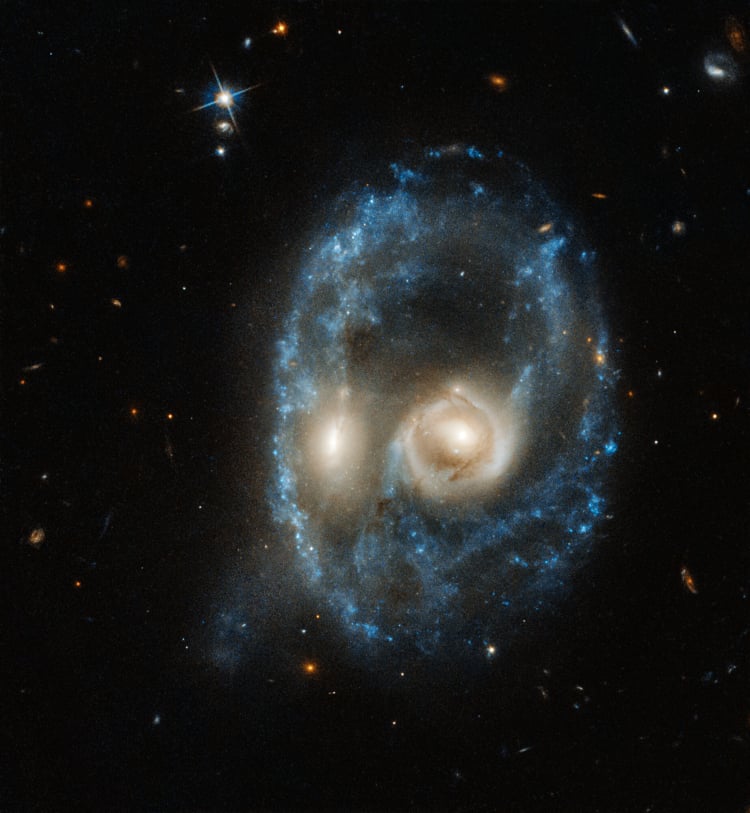
The complete merger of the two galaxies is projected to occur in about one to two billion years.
In December 1965, Stafford piloted Gemini VI, the first rendezvous in space, and helped develop techniques to prove the basic theory and practicality of space rendezvous.
Later he commanded Gemini IX and performed a demonstration of an early rendezvous that would be used in the Apollo lunar missions, the first optical rendezvous, and a lunar orbit abort rendezvous.
He served as the commander of the Apollo 10 ‘dress rehearsal’ mission preparing for the first Moon landing and as Apollo commander of the Apollo-Soyuz Test Project (ASTP) mission, a joint space flight culminating in the historic first meeting in space between American Astronauts and Soviet Cosmonauts, which ended the International space race.
Throughout his career, Stafford helped us push the boundaries of what's possible in air and space, flying more than 100 different types of aircraft.
Intuitive Machines' IM-1 mission made history on Feb. 22, with the first successful Moon landing by a company.
NASA Administrator, Bill Nelson congratulates everyone involved in this great and daring quest. NASA science and technology demonstrations now are gathering data on the lunar surface. The mission is expected to continue through the end of the month. NASA innovates for the benefit of humanity, and with its Artemis CLPS (Commercial Lunar Payload Services) initiative, the agency is working with commercial companies to achieve rapid flights to the Moon. By sending research that advances capabilities for science, exploration, and commercial development of the Moon, CLPS is another example of how NASA is supporting long-term lunar exploration by enabling commercial services on the Moon.
SpaceX successfully launched Axiom Space's third private astronaut mission on January 18, deploying a Falcon 9 rocket from Launch Complex 39A at Florida's Kennedy Space Center. The Crew Dragon spacecraft Freedom, carrying a seasoned former NASA astronaut and three European government astronauts, entered orbit approximately 12 minutes after liftoff.
Originally scheduled for January 17, the launch was delayed for additional pre-launch checkouts and data analysis on the vehicle. The delay was attributed to a need for further examination of parachute straps, known as energy modulators, following issues encountered during the return of the CRS-29 cargo Dragon mission in December. The straps, responsible for regulating load on the main parachutes, underwent untwisting procedures before this Crew Dragon launch.
The Crew Dragon is set to dock with the InternationalSpace Station (ISS) on January 20 at 4:19 a.m. Eastern, staying attached for about two weeks before returning to Earth with its four-person crew.
This mission, designated Ax-3, is the third in a series organized by Axiom Space, aimed at gaining spaceflight operations experience as the company plans to install commercial modules on the ISS. These modules will later form the core of a standalone commercial space station upon the ISS's retirement. Axiom previously conducted Ax-1 in April 2022 and Ax-2 in May 2023.
Ax-3 is commanded by former NASA astronaut Michael López-Alegría, with three European government representatives as part of the crew: Walter Villadei, an Italian Air Force officer serving as pilot; Alper Gezeravcı of Turkey, the first Turkish person in space, as a mission specialist; and Marcus Wandt of Sweden, the second Swede to fly to space and a reserve astronaut selected by the European Space Agency.
Looking forward, Axiom Space plans to continue short-duration private astronaut missions to the ISS at a rate of two per year until the launch of its first commercial module, currently scheduled for late 2026. Ax-4 is tentatively planned for the fall of 2024. This initiative aligns with NASA's broader strategy to encourage the development of commercial space stations to succeed the ISS post-retirement.
The Ax-3 launch showcased the third flight of the Crew Dragon spacecraft Freedom and the fifth flight of the Falcon 9 booster. SpaceX's commitment to booster reuse was highlighted, with plans to potentially extend their usage to up to 40 missions. This launch signifies another step in the evolving landscape of private space travel, prompting optimism for the success of commercial space stations beyond the ISS's tenure.
In a groundbreaking achievement, NASA has successfully transmitted a high-definition video from its asteroid probe, Psyche, located over 30 million kilometers away in space. Departing from the conventional method of using radio waves, Psyche's system employs a potent near-infrared laser beam for this communication feat. Rather than showcasing the vast emptiness of space, engineers opted for a heartwarming 15-second clip featuring Taters, an orange cat enthusiastically chasing a red laser dot around a couch.
This is not a fabricated tale. Our team stumbled upon this news on CNN and thoroughly examined NASA's Psyche spacecraft and mission details to confirm the authenticity of this delightful occurrence: Taters has indeed become a legend in space.
Typically, deep space probes transmit data back to Earth using radio waves, providing updates on the spacecraft's status and findings from ongoing experiments. The use of radio waves is preferred due to its lower power requirements and decreased susceptibility to interference.However, the drawback of radio beams lies in their limited data transmission capacity per second. While cutting-edge missions maximize data carried in signals through various techniques and algorithms, there are inherent limitations. To significantly enhance transmission rates, a higher frequency signal is essential.
In response to this challenge, the Jet Propulsion Laboratory (JPL) devised a 75W near-infrared laser system for the Psyche asteroid probe. This laser system achieves data transmission rates of up to 267Mbps, a remarkable improvement over radio systems that, even at their peak speed, remain ten times slower than lasers.
The highlight of this technological feat is NASA's test of high-definition video transmission, featuring a short clip of Taters, the cat engaged in a playful pursuit of a red laser dot across a couch. The significance of this achievement cannot be overstated, and it's surprising that it didn't make more headlines. To reiterate: Space. Cat. Lasers. What more could one ask for?
While the video includes additional information such as the craft's orbital path and the telescope that received the laser signal, the star of the show is undeniably Taters. The video even discloses Taters' heart rate, ensuring that all is well with the feline sensation.
It's essential to note that Taters isn't physically aboard the spacecraft; the video was pre-loaded into the probe's memory banks before launch.
This technological demonstration marks a pivotal moment, as future planetary missions can now transmit vast amounts of data at significantly accelerated speeds. One can only hope that NASA appropriately recognizes Taters' contribution to space exploration, perhaps with a plaque akin to those on the Voyager spacecraft—a sentiment worth echoing across the cosmos.
NASA is commemorating the 25th anniversary of International Space Station (ISS) operations, a historic milestone achieved on December 6, 1998, when the initial two components of the orbital outpost—the Unity and Zarya modules—were connected by the crew members of the space shuttle Endeavour's STS-88 mission.
In celebration of this significant anniversary, NASA Associate Administrator Bob Cabana, who served as the STS-88 commander and was among the first individuals to board the space station in orbit, along with International Space Station Program Manager Joel Montalbano, was engage in discussions with the current station crew members, Expedition 70, on Wednesday, December 6, 2023.
This monumental global initiative has witnessed the participation of 273 individuals from 21 countries, all contributing to the success of the unique microgravity laboratory. Over the years, the ISS has served as a host for more than 3,300 research and educational investigations, attracting participants from 108 countries and regions around the world.
On Thursday, November 9, SpaceX's 29th cargo mission to the International Space Station (ISS) achieved a successful liftoff. The CRS-29 Dragon spacecraft was launched atop a Falcon 9 rocket from NASA’s Kennedy Space Center in Florida at 8:28 p.m. EST (0128 GMT on November 10).
Remarkably, the Falcon's first stage executed a flawless landing at Cape Canaveral Space Force Station's Landing Zone 1 (LZ-1), marking its second flight after its previous role in launching Crew-7.

Assuming everything proceeds as planned, the Dragon is anticipated to reach the ISS around 5:20 a.m. EST (1020 GMT) on Saturday, November 11.
As the designation CRS-29 suggests, this mission is the 29th robotic resupply venture undertaken by SpaceX for NASA, falling under the category of Commercial Resupply Services (CRS). The Dragon spacecraft is loaded with over 6,500 pounds (2,950 kilograms) of supplies and scientific equipment, including NASA's AWE and ILLUMA-T experiments.
The AWE (Atmospheric Waves Experiment) aims to investigate gravity waves, disruptions in Earth's atmosphere similar to the ripples generated when a pebble is dropped into a pond. In contrast, ILLUMA-T (Integrated Laser Communications Relay Demonstration Low Earth Orbit User Modem and Amplifier Terminal) is set to test high-speed communications in collaboration with NASA's Laser Communications Relay Demonstration (LCRD) mission, launched in December 2021.
Upon installation and verification of ILLUMA-T on the ISS exterior, it will establish communication with LCRD, positioned on a U.S. Department of Defense satellite in geosynchronous orbit, over 22,000 miles (35,400 kilometers) above Earth. This joint effort between ILLUMA-T and LCRD is poised to create NASA's inaugural two-way laser communications relay system, potentially supplementing the conventional radio frequency systems used in current space-based missions. Moreover, it lays the groundwork for deploying laser communication terminals on spacecraft orbiting the moon or Mars.
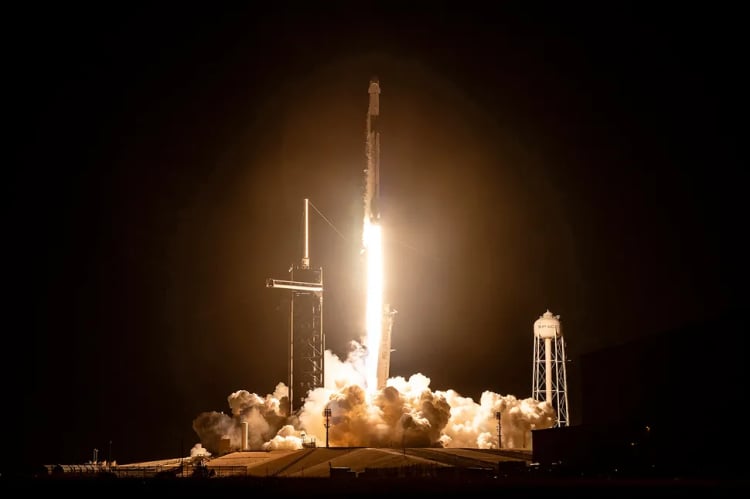
In addition to its scientific payload, CRS-29's Dragon is carrying a diverse array of food items, including seasonal specialties, destined for the ISS crew. Dana Weigel, deputy program manager for NASA's International Space Station Program, shared details about the treats, including chocolate, pumpkin spice cappuccino, rice cakes, turkey, duck, quail, seafood, cranberry sauce, and mochi, during a media call on Wednesday.
Following its approximately one-month docked stay at the ISS, Dragon is scheduled to return to Earth laden with about 3,800 pounds (1,724 kg) of cargo—an exclusive capability of the Dragon spacecraft. This stands in contrast to other operational robotic freighters, such as Northrop Grumman's Cygnus and russia's Progress vehicle, designed to burn up in Earth's atmosphere at the conclusion of their orbital missions.
The launch initially slated for November 5 was postponed by two days to allow for additional prelaunch processing time. Further, the liftoff was delayed an additional two days to address an issue with one of the Dragon's Draco thrusters.
SpaceX is gearing up for its upcoming robotic cargo mission to the International Space Station, known as CRS-29, which has received the green light for liftoff. The mission is scheduled to commence at 8:28 PM EST on Thursday (6:58 AM IST on Friday, November 10) from Launch Complex 39A at the Kennedy Space Center in Florida, utilizing the Falcon 9 rocket.
CRS-29 holds a payload of significant scientific experiments and technology demonstrations, featuring optical communications equipment and instruments designed for measuring atmospheric waves. Among the noteworthy experiments aboard the space station is one exploring the potential impact of space conditions on bone health on Earth.
NASA is dispatching the Space Flight Induced Ovarian and Estrogen Signaling Dysfunction, Adaptation, and Recovery on CRS-29. Despite its complex name, the experiment aims to comprehend the effects of spaceflight, nutritional factors, and environmental stress in space on ovulation, and subsequently, its impact on the skeletal system. NASA anticipates that the findings from this study could contribute valuable insights to enhance bone health on our home planet.
Another exciting experiment, the ILLUMA-T investigation, focuses on testing advanced laser-based communication capabilities in space. A terminal mounted on the exterior of the space station will utilize laser communications to transmit high-resolution information to NASA's Laser Communications Relay Demonstration (LCRD) system in Earth's orbit. The LCRD will then relay the data to optical ground stations in Hawaii and California. This innovative system utilizes invisible infrared light, enabling the transmission and reception of information at higher data rates compared to traditional radio frequency systems. Applications like ILLUMA-T have the potential for faster and higher bandwidth data transmission between spacecraft orbiting the Moon or Mars.
Accompanying the CRS-29 mission is the Atmospheric Waves Experiment (AWE), an infrared imaging instrument designed to measure the properties of atmospheric gravity waves. These waves, analogous to ripples in water caused by a dropped stone, traverse the planet's atmosphere, and the AWE aims to study and understand their characteristics.
After 4,000 Martian days of exploration since its arrival on August 5, 2012, NASA's Curiosity rover is still actively engaged in scientific pursuits. Recently, the rover completed its 39th rock sample drilling operation, gathering pulverized rock material for in-depth analysis.
Curiosity's primary mission is to investigate whether ancient Mars had the right conditions to support microbial life. It has been steadily climbing the lower slopes of Mount Sharp, a towering 3-mile-tall (5-kilometer-tall) Martian mountain, which contains rock layers representing different epochs of the planet's history. These layers offer a historical record of how Mars' climate evolved over time.
The most recent sample was obtained from a location affectionately called "Sequoia" (all mission science targets are named after places in California's Sierra Nevada). Scientists hope that this sample will provide insights into how Mars' climate and potential habitability changed as this region became enriched with sulfates—minerals that likely formed in salty water that was evaporating during Mars' transition to a drier state billions of years ago. Ultimately, Mars lost its liquid water.
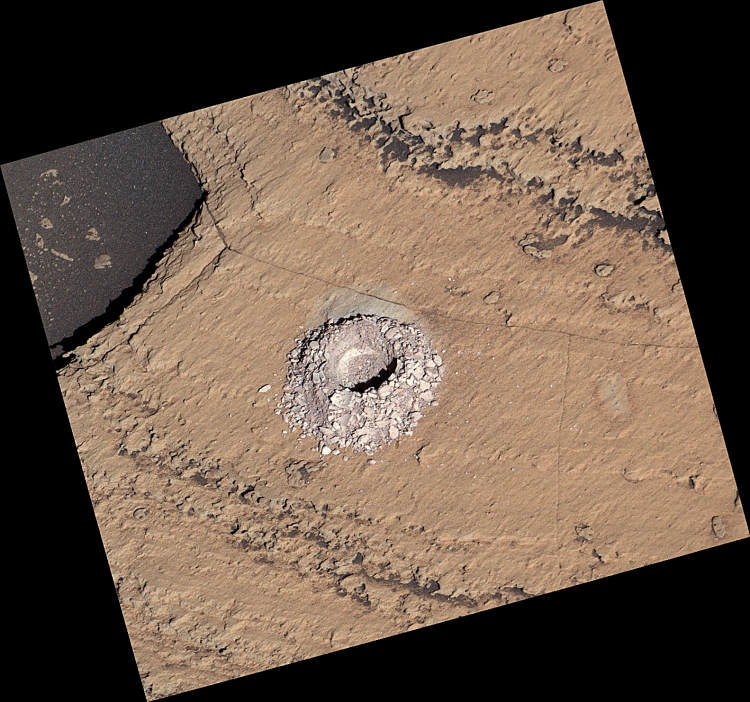
Ashwin Vasavada, the project scientist for Curiosity at NASA's Jet Propulsion Laboratory in Southern California, which leads the mission, commented on the significance of these findings. "The types of sulfate and carbonate minerals that Curiosity’s instruments have identified in the last year help us understand what Mars was like so long ago. We’ve been anticipating these results for decades, and now Sequoia will tell us even more."
To decode the mysteries of Mars' ancient climate, the scientists employed detective work. In a recent publication in the Journal of Geophysical Research: Planets, the team utilized data from Curiosity's Chemistry and Mineralogy (CheMin) instrument to identify a magnesium sulfate mineral called starkeyite, which is associated with extremely arid climates, similar to Mars' current conditions.
The researchers believe that after sulfate minerals initially formed in salty water that was evaporating billions of years ago, these minerals underwent transformation into starkeyite as Mars' climate continued drying to its current state. Discoveries like this enhance scientists' understanding of the evolution of present-day Mars.
Despite covering nearly 20 miles (32 kilometers) in the harsh Martian environment, exposed to frigid temperatures, dust, and radiation since 2012, Curiosity remains robust. Engineers are currently addressing an issue with one of the rover's primary "eyes"—the 34 mm focal length left camera of the Mast Camera, or Mastcam, instrument. Aside from capturing color images of the rover's surroundings, Mastcam's two cameras help scientists remotely assess rock compositions by analyzing the wavelengths of light they reflect in various colors.
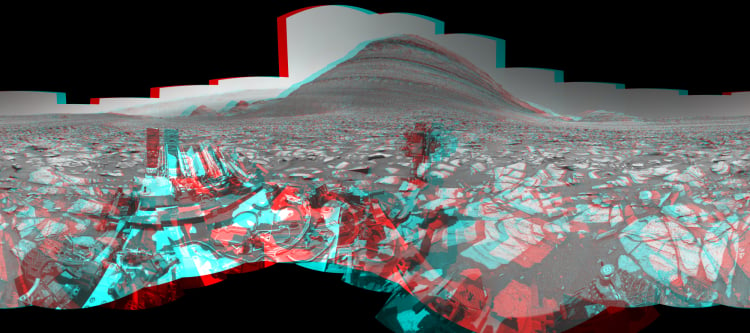
The issue arose when the left camera's filter wheel became stuck between filter positions on September 19, affecting the quality of the mission's raw images. The mission team is working to gradually restore the filter wheel to its standard position.
If the filter wheel cannot be fully restored, the mission will depend on the higher-resolution 100 mm focal length right Mastcam as the primary color-imaging system. This would impact how the team selects science targets and rover routes since the right camera needs to capture nine times more images than the left camera to cover the same area. The ability to observe detailed color spectra of rocks from a distance would also be compromised.
In parallel, the mission team continues to monitor the performance of the rover's nuclear power source, expecting it to provide sufficient energy for many more years. They have also developed solutions to address wear and tear on the rover's drill system and robotic-arm joints. Software updates have resolved issues and introduced new capabilities to Curiosity, making long drives smoother and reducing wheel wear, particularly when driving over sharp rocks (thanks to a previous addition of a traction-control algorithm).
Meanwhile, the team is preparing for a temporary break in November. Mars is about to pass behind the Sun, a phenomenon known as solar conjunction. During this period, solar plasma can interfere with radio waves and potentially disrupt communications. Engineers will provide Curiosity with a to-do list from November 6 to 28, after which safe communication can resume.
Comments